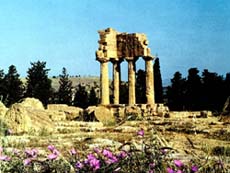Vacation Packages
Agrigento vacation packages
agrigento Hotels
- Agrigento luxury hotels 5*:
- Agrigento first class hotels 4*:
- Baia di Ulisse Wellness & SPA
- Baglio Della Luna
- Agrigento budget hotels 3*:
- Villa Amico B&B
- Villa Diana
- Villa Alisia
- Selection of gut rated hotels in Agrigento:


